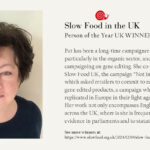Measles and the Tedious Culture of Outrage
News of the measles outbreak in Wales in the UK has sparked yet another heated conversation about vaccination.
On the one hand, officialdom claims that Andrew Wakefield’s work linking MMR with autism is completely discredited by the medical profession and in the media; on the other it claims that the work, first published in 1998, was so influential that it has stopped nearly two generations of parents from giving their children the MMR jab.
The reporting of this event has been shambolic; high on innuendo and supposition and low on relevant facts. There is no clarity about who has been affected by this measles outbreak. Those who have allegedly caught the disease are referred to as ‘victims’, ‘cases’, ‘individuals’ or people’ leaving it to our imaginations to fill in the blanks as to what the age range is (and information about a new outbreak in the Northeast of England is being treated in a similar manner).
The inference is that in Wales the outbreak has affected young unvaccinated school-aged children – in other words children who weren’t even born when the original Wakefield article was published (and with some fluctuations Wales has traditionally had a high uptake of the MMR – in 2012 uptake was 94%).
But, of course, vaccinated children can still get the measles – as researchers in Canada recently found.
To truly understand the outbreak in Wales we would need to know how many of those who have contracted the disease are vaccinated or unvaccinated – but that information has not been made public. Nor is there any clarity about whether the 83 “people” needing hospital “treatment” with the disease are actually young children. Given the near hysterical nature of the reporting so far, it seems likely if they were, this would have been made explicit in order to wring every sad tear drop out of the story, but more importantly to boost sales and viewing figures (and uptake of all that vaccine that the UK government has stocked up on).
Much the same can be said about the death shrouds that have been waved in the papers for the last few weeks. ‘Measles Outbreak: First Death Feared‘ – that was the headline in the Sunday Times (it’s since been marginally toned down for the internet). Every news agency carried the same story which, it turns out, was not about an actual death but which bigged up a quote from a Welsh health official saying she ‘feared’ there could (eventually…in the fullness of time…someday…) be a death.
The reporting about the one person who has died since the outbreak has been similarly disgraceful. The early headlines screamed “Measles Death!” and the stories berated the health authorities for negligently sending a young man home to die of a deadly disease.
But the truth was somewhat different – and has quietly disappeared from the front pages. The young man, 25 year old Gareth Colfer-Williams, suffered from asthma and, at 6 foot 1 inch and weighing just 8 stone (112 lbs), was grossly underweight. He clearly had bigger health challenges than the measles. Three weeks after his death the coroner still can’t say for certain what killed him and the hospital authority has confirmed that Colfer-Williams was never admitted to hospital with measles.
I have no particular axe to grind about Andrew Wakefield. My thoughts and feelings are probably best described as ambivalent. But the fact that he continues to be a whipping boy for this whole issue is probably more illustrative of the media’s addiction to outrage, and its need for a villain to justify that addiction, and the medical profession’s inability, maybe even unwillingness, to help parents understand and deal with childhood illnesses than anything else.
What is measles?
Measles is a viral infection. It occurs mostly in young children and is passed on via water vapour or droplets (for instance from sneezing or coughing) from an infected person.
Its main symptoms are mild fever and reddish-brown blotchy rash. These usually appear after a 10 day incubation period during which the child may have cold-like symptoms including tiredness, irritability, dislike of bright light, cough and runny eyes.
The rash usually breaks out on the forehead and face, and can spread down the neck to the feet. This process can go on for 5-8 days before it begins to get better. It’s uncomfortable, it’s highly contagious but in healthy children it is not lethal. In older children and adults measles can be more severe (though this is not a given) but whatever age it strikes doctors have little to offer in terms of actual treatment. The best medicine for measles is attentive and loving care from a parent or loved one, plenty of fluids, light, healthy foods, freedom from stress and rest.
Vaccinate, vaccinate, vaccinate
The ad nauseum message in the media is that vaccination is the only protection.
And yet, with occasional fluctuations over the years, we are a well vaccinated nation. Scotland has the highest uptake of 94.3%, followed by Northern Ireland at 93.3% and then Wales at 92.7%. Overall the UK is at 91.6%. In England, 91.2% of children have been vaccinated; London has the lowest uptake at just 86.1%.
If vaccination is the only factor influencing whether or not a child becomes infected with measles why is the outbreak in South Wales – where the uptake is high – and not in London where the uptake is low?
In addition, the measles takes about 10 days to incubate. Vaccinating a child who already has the disease – a high probability in an area where there is an outbreak – will not prevent the child from getting sick. Nor should it be implied, as it has been, that vaccination is somehow a ‘treatment’ for the disease.
Immunity is key
The best protection against viruses is a healthy immune system.
This is an important point in relation to the Wales outbreak where parents have been frightened by reports of brain damage, deafness and death into attending ‘emergency clinics‘ to get their children vaccinated. Wales, particularly South Wales, regularly comes bottom of the UK’s health tables. It is not an affluent area and it has long been recognised that poverty has played a huge part in the ongoing health issues of its population.
It’s hardly surprising that a measles outbreak (and the fear that has been manufactured around it) would have taken hold there. Nor would it be surprising to hear that the symptoms of the disease were more severe than normal amongst this population.
But in general measles is only ‘deadly’ in the developing world where children are under other extreme pressures such as malnutrition, poor hygiene and inadequate housing or may have other diseases for which the additive effect of measles infection proves fatal. It is misleading to continue to say it is a deadly disease in the context of our everyday lives in the UK – and yet this is what the news media and a gaggle of vaccination-happy pundits keep saying.
Given this it is perhaps worth questioning whether a) threats of widespread death are reasonable – Office for National Statistics figures show, for example, that no child has died from measles in England and Wales since 1992, those few who have died have been immune-compromised adults, as appears to be the case with Colfer-Williams; and b) whether attention to better overall health, and eradication of poverty and other social inequities, rather than simply a major vaccination programme, might yield better long-term results.
Ashamed
So far the reporting on this issue has been emotional and misleading. The lines have been, some would say deliberately, blurred between rumoured, alleged and actual (laboratory confirmed), cases. I doubt anyone really knows how many people in South Wales actually have measles.
All the anger and finger pointing has added to the stress in a general population stretched to breaking point by trying to absorb the realities of North Korea’s nuclear threat, unpredictable terrorist attacks, famine, war, economic collapse, climate change, rising prices in the shops, and a weird sense of betrayal as one by one our celebrity and sports ‘heroes’ are revealed to be child molesters, drug addicts and murderers.
It has played shamelessly to the increasingly tedious ‘culture of outrage’ which is spreading throughout the world faster than any measles epidemic and which has a deadly effect on our minds, our emotions and our souls. It has refused to examine any point of view other than that of ultra conservative, Sense About Science types who seem to have an agenda that has little to do with child health – or science.
Those who do hold rational alternative views about the etiology of the disease or the best methods of prevention or treatment have decided not to stick their heads above the parapet for fear of being hounded and bullied by internet trolls who have nothing better to do than search the web for things to disagree with.
I’ve watched news reporters who I know to be better than all this acquiesce to this kind of lynch-mob mentality using sensationalist language to ‘sell’ the story in prime time. It has made me ashamed to be a journalist and it makes me wonder, rather forlornly these days, not only about the question of individual health freedom but whether we can truly call our media ‘free’, ‘impartial’ or even ‘informed’ anymore.
- A shorter version of this article appeared on NYR Natural News April 8 2013. However vile internet trolls hounded the company and the Daily Telegraph published an article entitled something like Neal’s Yard Remedies Wants to Kill Your Children (libellous, inaccurate, forgettable and now withdrawn). Neal’s Yard Remedies was forced to take the article down. This version of record brought the story up to date.












